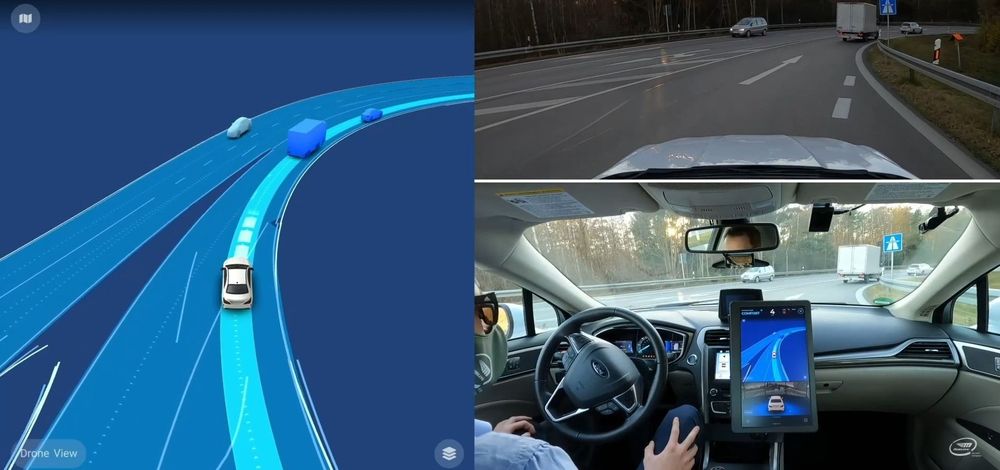Mobileye's lane choices are better because of human-edited HD maps.
Mobileye's map are crowd-sourced not human edited.
3) I think Tesla's predictions are better than both Waymo and Mobileye right now (see the fsd beta predict parked cars and which cars it should go around), and the predictions will only get much better, very soon (within a year). Meanwhile, Waymo will continue having to hand code a lot of their predictions (like what it means to be a parked car, because they lack the data).
It hilarious that the only one that actually Hand-codes alot of its prediction is Tesla.
https://twitter.com/greentheonly/status/1344289571937386498
FSD beta is actually mind blowing and impressive though. Tesla is making very fast progress towards "level 5" robotaxis, which many people didn't think was possible until 2030.
From what I've seen from the recent Mobileye video, they're behind Tesla.
So Mobileye demonstarted how thry are able to drive anywhere in Germany after shipping their car there, immediately after acouple days with no engineer and they credited that to their REM map which allows them to drive anywhere. Your analysis is that they are behind Tesla.
Mobileye AVs Can Go Anywhere in Germany | Intel Newsroom
What happened to 'its gameover for the competition' and L5 in 6 months which you said because you saw Influencers driving around the streets and having to take over every a-couple miles to avoid a crash?
Shouldn't those statements be credited also to mobileye whose system works in more market and countries than FSD Beta?
I thought being able to drive all over the country was unique to Tesla and what made them in your words "so far ahead, no one will catch up."
Yet mobileye just proved that is completely wrong. You claim one of the biggest problem is lane assignment yet in every video from Brandon and DirtyTesla. There are numerous disengagements to stop it from running red lights, crashing into parked cars, rear ending cars, changing lanes into cars in adjacent lane, running into debris on road including tree branches, running over curbs, cones, potholes, walls, etc. i could keep going.
Sadly, I think Tesla will be so far ahead, no one will catch up.
They are so ahead they still use c++ for prediction and now slowly moving it to NN when the rest of the industry already used NN.
https://twitter.com/greentheonly/status/1344289571937386498
True, but Karpathy and Elon consistently emphasize that any improvement in Autopilot, even minor, is a huge deal because it's country / continent / worldwide. That's a big deal. If Tesla widely releases FSD beta, likely for all USA owners, then consider the implications of that confidence... along with how many features are packed into the FSD beta.
Mobileye's systems are used in more markets and counties than Tesla.
Yup, unless Tesla is faking the improvements by releasing a crippled beta, it's game over. If they're actually able to improve the beta by using real world tester data this quickly, they've got an agile and effective stack that will hopefully allow them to widely deploy the FSD beta to all cars. Once the FSD beta is widely deployed, it's game over for sure.
By the time FSD beta is released to public (production) later in 2021 (well under 1,000 miles per disengagement), Lync & Co zero EV would have started deliveries (Sept) and would have Mobileye's supervision running in the cars. It will come with HANDS-FREE full highway system (like NOA) and you would be able to compare to see if its better, equal or worse than NOA.
It will also come with urban, suburban and rural driving that will most likely include features like:
1. traffic lights, yield and stop signs recognition and response
2. handling round about, traffic circles and T interactions
3. handle three and four way stops.
3. automatic lane changes
4. handling narrow/crowded streets
5. maneuvering around obstacles, on-road debris and stopped/parked cars.
6. Use full range of predictive driving meaning it will anticipate and stop for other actors (like peds on cross walk that's about to cross the street. or someone in drive way about to pull out.)
7. handling construction barriers/cones
8. Enter/exit highway
This is nothing like current AP, but rather the full feature set of FSD Beta but better, equal or worse (reliability, safety and comfort). This means it will have better or fewer disengagements. The only feature it wont have that FSD beta might have is that it probably won't make 90 degree turns for safety reasons. As regular drivers are not trained drivers. Tesla unlike others are much more cavalier on safety. FSD Beta might not even release with all the feature set.
I'm sure sooon enough Mobileye will post a video of their system in US. Seeing as the last time was Munich where their auto partners are HQ'ed. Next time would probably be Detroit and hopefully at CES.
Then we can compare its performance to this video which FSD beta struggled with
Anyways the countdown is almost down to 3 months till Tesla will have Level 5 with human level reliability (level 5 in 6 months as you said). Lets see how that prediction is working.
1) One of the fsd beta's main weaknesses is that it makes many wrong lane decisions.
Just needs better lane assignment it seems.





